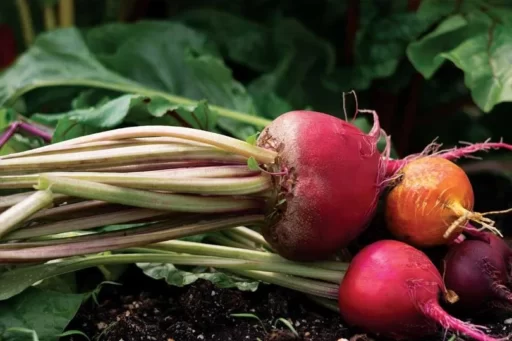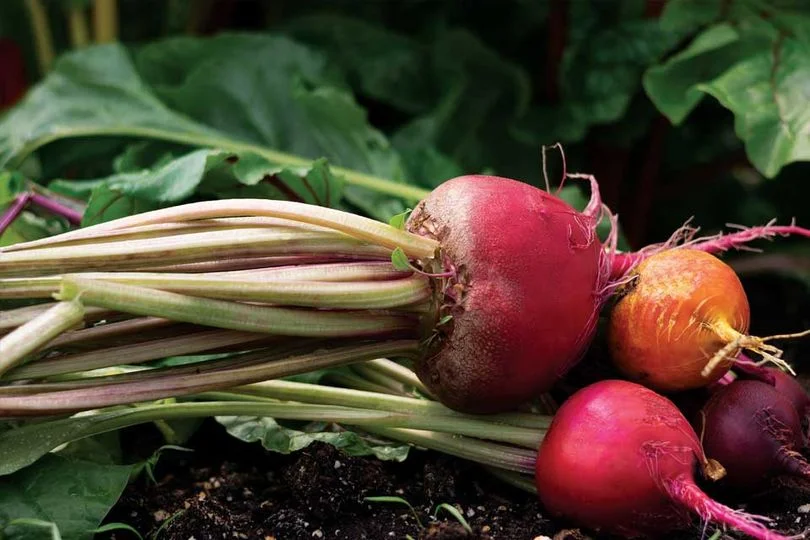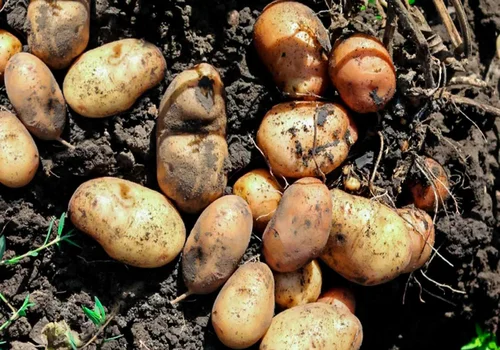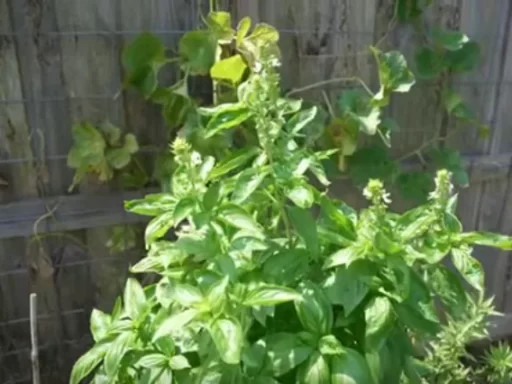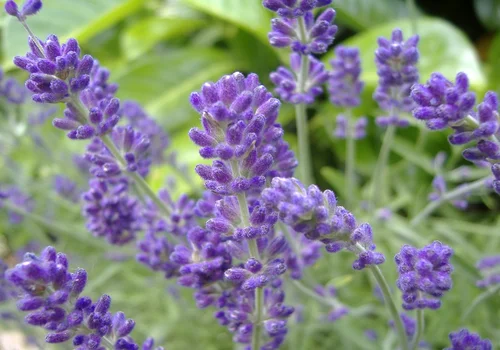Beets are a versatile and nutrient-packed vegetable that can thrive in various garden environments. Whether you’re a seasoned gardener or just starting, learning how to grow beets properly can ensure a productive and delicious harvest. This article provides you with everything you need to know about growing beets, from soil preparation to harvesting. Let’s dive into the essential tips for growing perfect beets every time.
Why Grow Beets?
Beets are not only delicious but also incredibly nutritious. They are rich in antioxidants, vitamins, and minerals that offer numerous health benefits. Additionally, beets are versatile in the kitchen, making them a popular choice for home gardeners. Whether you enjoy them roasted, pickled, or pureed, beets can be a great addition to your diet.
Selecting the Right Location
Like most vegetables, beets prefer a sunny spot with moist yet well-drained soil. The key to growing healthy beets is providing fertile soil enriched with organic matter. Garden compost or well-rotted manure works wonders in ensuring that the soil retains moisture without becoming waterlogged. Spread the organic matter about an inch deep to create the perfect environment for your beets to thrive.
Ideal Soil Conditions
The soil should hold moisture for a few days after watering or rain but should not remain soggy. Beets are thirsty plants, requiring a steady supply of water to support their leafy growth and root development. By maintaining well-drained soil, you can prevent issues like root rot and bolting (premature flowering).
Choosing the Right Beet Varieties
There are several beet varieties to choose from, depending on your taste preferences. The traditional red beets have a deep, earthy flavor, but if you prefer a sweeter taste, consider growing golden or Chioggia beets. The Chioggia variety is particularly stunning with its concentric rings, adding a visual appeal to your dishes.
When selecting beet varieties, it’s essential to choose slow-to-bolt types like ‘Boltardy.’ Bolting can make the roots tough and inedible, especially when planted early in the season. Opting for slow-bolting varieties ensures that your beets remain tender and delicious.
Sowing Beets: Directly or in Plug Trays
You have two options for sowing beets: directly into the ground or in plug trays for transplanting later. Both methods have their advantages.
- Direct Sowing: This method is time-saving as it skips the transplanting step. Simply mark out rows about half an inch deep and space the seeds two inches apart. Each beet seed is actually a cluster of seeds, so expect multiple seedlings from each one.
- Plug Trays: Starting beets in plug trays allows for an earlier start, especially if you live in a cooler climate. You can sow the seeds indoors and have seedlings ready to plant as soon as the soil warms up. This method also ensures that you have young plants ready to go when space becomes available in the garden.
Thinning and Spacing
Once the beet seedlings have sprouted, it’s essential to thin them out. If you’ve sown seeds directly into the ground, thin the seedlings to about two inches apart initially and then to four inches as they grow. Thinning ensures that each plant has enough space to develop into a full-sized beet.
If you’ve sown seeds in clusters, leave a generous space between them—about 8 to 10 inches. Beets tend to grow well in clusters, with the roots naturally pushing apart as they grow.
Dealing with Pests
While beets are generally easy to grow, there are a couple of pests to watch out for:
- Birds: Early in the season, birds may be tempted to nibble on young seedlings. Cover your plants with netting to keep birds at bay.
- Leaf Miner: This pest tunnels into beet leaves, creating unsightly damage. The solution is simple: remove and destroy any infected leaves to prevent the pest from spreading.
By addressing these pests early, you can keep your beet crop healthy and productive.
Watering Beets
Beets need consistent moisture to thrive. Keep them well-watered, especially during dry spells, to avoid issues like small, cracked, or woody beets. Mulching with grass clippings or straw helps retain soil moisture and keeps the soil cool during hot weather.
In extremely hot climates, you can also use shade cloth to protect the beets from excessive heat. Alternatively, plant your beets in the shade of taller crops like tomatoes or beans.
Harvesting Beets
Beets are ready to harvest when the roots are about the size of a golf ball. You can easily check their size by scraping away the soil around the root. Harvest by gripping the base of the foliage and gently twisting and pulling the beet out of the ground.
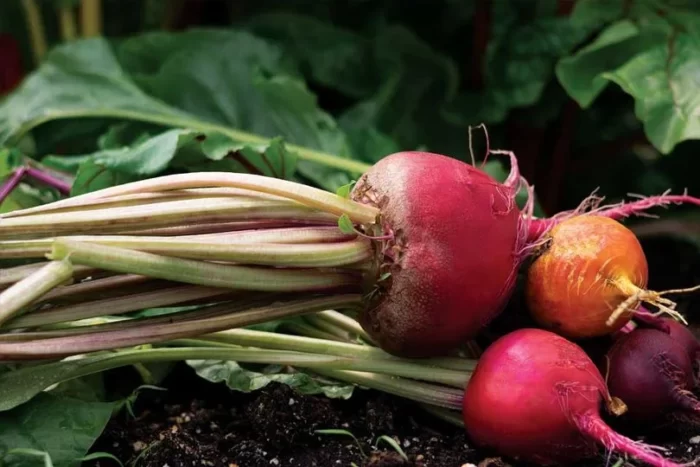
One of the advantages of growing beets in clusters is that you can selectively harvest the largest beet in each cluster, allowing the smaller ones to continue growing. Be careful not to let the beets grow too large, as they can become woody in texture if they exceed the size of a tennis ball.
Storing Beets
Once harvested, twist off the leaves to prevent moisture loss from the roots. Beets can be stored in the refrigerator’s crisper or salad compartment for several weeks. For winter storage, you can lift the beets and store them in damp sand or potting mix in a cool place, protecting them from freezing temperatures.
Using Beet Greens
Don’t throw away the beet leaves! They can be used like spinach or chard in a variety of dishes. You can stir-fry, steam, or even blend them into smoothies for a nutritious boost. Young beet greens are also excellent in salads.
Health Benefits of Beets
Beets are not just a delicious vegetable; they are also packed with antioxidants, vitamins, and minerals. They are known for their cancer-fighting properties and can improve cardiovascular health. Whether roasted, pickled, or blended into a smoothie, beets offer a nutritional punch that is hard to beat!
Frequently Asked Questions (FAQs)
- When is the best time to plant beets?
The best time to plant beets is in early spring or late summer, depending on your climate. In cooler regions, you can plant as early as four weeks before the last frost. - How often should I water my beets?
Beets need regular watering, especially during dry spells. Keep the soil consistently moist but not waterlogged to avoid issues like cracked or woody beets. - What is the best soil type for beets?
Beets thrive in moist, well-drained, and fertile soil rich in organic matter. A slightly acidic to neutral pH is ideal. - How do I prevent beets from bolting?
To prevent bolting, choose slow-to-bolt varieties like ‘Boltardy’ and provide consistent moisture. Avoid planting too early in the season when the temperature fluctuates. - Can I eat beet leaves?
Yes, beet leaves are edible and can be used in salads, stir-fries, or smoothies. They are packed with nutrients and offer a mild flavor similar to spinach or chard. - How do I store beets for winter?
Beets can be stored in a cool place in boxes of damp sand or potting mix. This prevents them from drying out or freezing during the winter months. - Why are my beets small and woody?
Small and woody beets are often a result of inconsistent watering or overcrowding. Ensure that the plants are spaced properly and receive regular moisture throughout the growing season.

